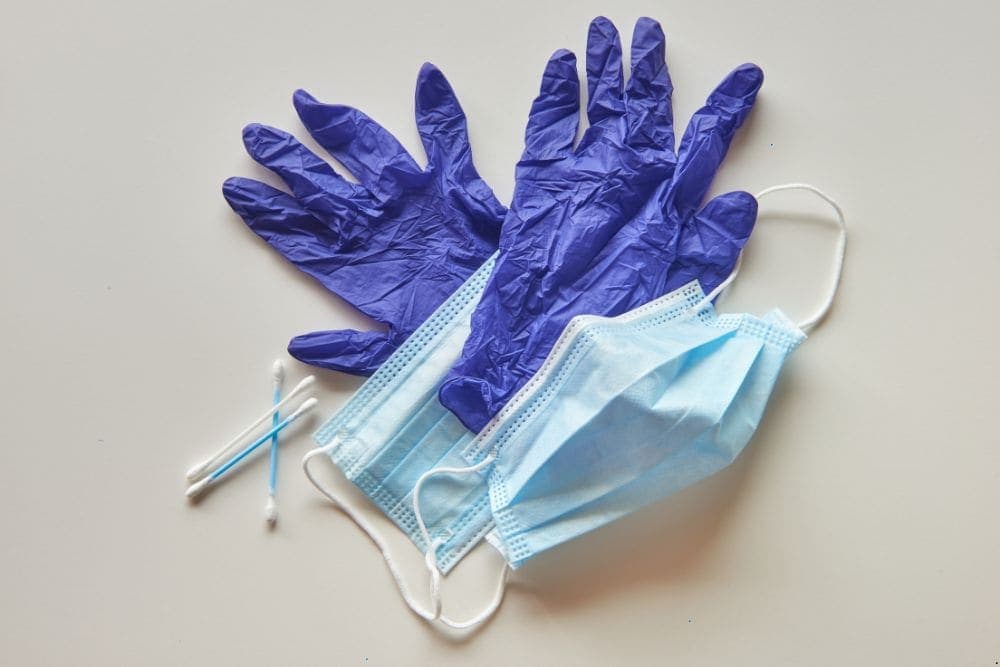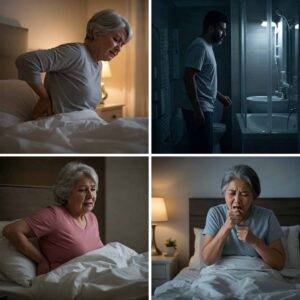
Picture this: it’s time to have your loved one transition to a senior care home, and you and your family are grudgingly coming to terms with it. Your heart is heavy; after all, your loved one is moving from the only home they have known and moving into a new environment to start from zero.
They will be in a place where everything will be new to them. Then, that tiny nagging voice at the back of your mind mutters, “Is this the best for my aging parent?”
Sound familiar?
You are not alone. I remember vividly when it was time to have my grandmother move into a senior care home. I wondered if she would fare well in the new environment with her dementia and diabetes.
Will there be anyone to watch out for her? Who will remind her to hand wash? After the COVID-19 pandemic, I took it upon myself to ensure she maintained hand hygiene. Was moving the best decision for her in the long term?
You might wonder if a senior home is the best place for your loved one. Will they be exposed to infections? Are there strategies for infection prevention and control in place?
Infection prevention control (IPC) in senior care homes is critical to consider before deciding on a care home.
In this article, we will explore the importance of infection prevention control in senior living facilities, emphasizing the importance of protecting your aging loved one from contracting infections while at care facilities.
Understanding Infections in Healthcare Settings
One thing to note is that as people age, their immune systems often weaken due to physiological changes, making them susceptible to infections.
One of these physiological changes is the reduction of lymphocyte production, which is essential for the body to effectively fight viruses, bacteria, and toxins that attack the body.
Healthcare-associated infections (HAIs) can be challenging in senior care facilities. They may arise from specific essential invasive procedures like catheters and contaminated equipment. At other times, if there is a lapse in sanitation practices, your loved one may be exposed to infections.
Senior care homes must have an infection management plan and exert extra effort in sanitation to minimize the spread of HAIs.
You need your loved one in a place where the caregivers are conscious of the dangers that infections can expose residents to. When touring the facility, check their protocol for preventing infections

Definition of Healthcare-Associated Infections (HAIs) and Their Impact on Seniors
Healthcare-associated infections are those that a person acquires while receiving treatments and assistance at a medical or assisted living care facility. These infections can range from mild to life-threatening.
Your loved one can contract HAIs from the following settings:
- Dialysis clinics
- Senior care facilities
- Surgical centers
- Hospitals
- Physiotherapy clinics
The best thing to note about HAI infections is that they can be avoided. All you need to do is ensure you and your loved one take hygiene measures seriously. You will also have to work together with your loved one’s caregivers to ensure they are observing infection control measures in their daily routines.
Common types of infections in senior care facilities
Some of the common types of infections in senior care facilities include the following:
1. Pneumonia
Pneumonia is one of the most lethal infections among seniors in the US, with over 60% of seniors admitted to hospitals. There are two types of pneumonia:
Bacterial pneumonia
The lungs are infected by bacteria, especially Streptococcus, for this type of pneumonia. If these bacteria are in a young person’s body, they may never cause harm and continue living in their throat.
However, if they are in a senior’s body, one with a compromised immune system, they may move down into their lungs. Once these bacteria enter a senior’s lungs, they inflame and infect their air sacs. Then, they will fill the air sacs with fluid, causing pneumonia.
Your loved one will be at a high risk of contracting bacterial pneumonia if they are:
- 65 and above
- Recovering from a surgery
- Smoke
- Drink a lot of alcohol
- Have a viral pneumonia
- Have a medical condition that comprises their immune system ( HIV positive, leukemia, renal failure, or organ transplant)
- Not eating a well-balanced diet.
- Have other chronic health conditions like heart disease, diabetes, or asthma
Pneumonia poses a significant risk to seniors due to a variety of reasons:
- Increased exposure in senior care facilities
- A reduction in lung capacity
- Weak immune system
Signs and symptoms of pneumonia in the elderly
- Fever
- Coughing green, yellowish, or bloody mucus
- Chills
- Decreased appetite
- Delirium
- Confusion
- Fatigue
- Unable to catch one’s breath
- Low appetite
- Fingernails or lips turning blue

Prevention
- Vaccination(PCV13 or PPSV23): You can contact your loved one’s doctor and find out if they recommend a pneumococcal vaccine to prevent pneumonia.
- Proper hygiene measures like washing hands before eating and after visiting the bathroom.
- Quit smoking
- Get enough exercises
- Eat a balanced diet
- Enough sleep
- If possible, stay away from sick people.
Ventilator-associated pneumonia (VAP)
Sometimes, if your loved one is on a ventilator, they may contract ventilator-associated pneumonia if the ventilator is contaminated. The microorganisms from the contaminated ventilator may colonize the upper respiratory system and then move into the lungs.
2. Skin Infections
As a person ages, their skin loses the ability to resist diseases and heal itself, making them more susceptible to developing skin infections. Some of the most common skin infections in the elderly population are:
- Fungal foot or bacterial infections (common in diabetes patients)
- Viral infections (herpes)
- Drug-resistant infections — Methicillin-resistant Staphylococcus aureus (MRSA).
Signs and Symptoms
- Ulcers or wounds
- Bedsores
- Unusual itching
- Experiencing pain in some parts of the skin
Prevention
- Quit smoking
- Treat wounds properly
- Good hygiene practices (frequent handwashing or disinfection)
- Shingles vaccine
3. Elderly influenza
Elderly influenza is a type of flu that the elderly get from the influenza virus, and it is usually common during winter months.
Symptoms
- Headache
- Body aches
- Fever
- Sore throat
- Chills
- Fatigue
- Dry cough
- Sneezing
- Stomach problems
- Stuffy nose.
Prevention and Treatment
- Flu vaccine
- Practice good hygiene
- Avoid or stay away from sick people
- Disinfect surfaces
- Frequent handwashing

4. Urinary Tract Infections (UTIs)
UTIs are some of the most common sources of bacteremia that cause bloodstream infections in the senior population.
Symptoms
One thing to note regarding UTIs in the senior population is that a person doesn’t always have to experience frequent urination or pain, which are common among the younger generation. However, your senior loved one may experience the following symptoms when they have UTIs:
- Urinary incontinence
- Rapid heart rate
- Poor appetite
- Low blood pressure
- Delirium
- Frequent falls
- Drowsiness
Prevention and Treatment
- Hydrate by drinking a lot of water
- When urinating, ensure to empty the bladder
- After using the toilet, wipe from front to back
- Urinate after sex
- Wearing loose cotton undergarments
Key Strategies for Infection Prevention Control
Effective IPC will go a long way in reducing healthcare-associated infections. Some of the following strategies will help your loved one greatly while at a care home.
Importance of hand hygiene in preventing infections
Hand hygiene is vital in minimizing the prevalence of HAIs in senior care settings. Residents and caregivers must embrace the culture of cleaning hands to help prevent the spread of microorganisms.
The WHO emphasizes the following critical moments for caregiver hand washing and disinfecting:
- Before touching a patient or a resident
- Before any aseptic procedure
- After touching a resident’s surroundings
- After touching a patient or a resident
- After exposure to body fluids
Proper use of personal protective equipment (PPE) among healthcare workers
Personal protective equipment (PPE) is the equipment healthcare workers use to minimize or protect themselves and their loved ones from exposure to hazards.
At senior care homes, caregivers and other personnel wear gloves and other PPE to protect the residents from contact with infectious substances like body fluids. Healthcare workers act as the last line of defense, protecting your loved one.
The Centers for Disease Control and Prevention(CDC) recommends that all health and senior care workers take necessary precautions to protect patients and workers from transmissible diseases.
Proper use of PPE among healthcare workers requires each facility to train its employees on how to apply (don), remove (doff), and safely dispose of PPE without contaminating the surfaces or themselves.
PPE includes:
- Face masks
- Gloves
- Eye protection
- N95s
- Gowns

Environmental cleaning practices to reduce the spread of infections
Some of the environmental cleaning practices that senior care workers apply to reduce the spread of infections include:
Sanitizing surfaces: At Amy’s Eden, we pay close attention to kitchens, bathrooms, and other common areas. Some infections, such as influenza, can be easily spread when an infected person coughs or sneezes, and the droplets rest on a surface that other people can easily touch. Therefore, we frequently sanitize surfaces to reduce the spread of infections.
Cleaning and drying: When a person cleans, moisture is left, and if they don’t dry the surface, bacteria can multiply. Paying close attention to faucets spills on the floor, and counters will help reduce the spread of infections.
Using a lint-free cloth is essential in reducing the spread of infections. When the cleaning personnel use a broom, there is a probability to disperse the dust into the air. The release of dust may increase the spread of airborne infections. However, when the staff uses dust retaining mops, they help reduce the spread of diseases.
Waste disposal: Senior care facilities must have proper waste disposal policies to ensure the waste generated at the facility is collected according to the apparent Environmental Protection Authority (EPA) guidelines.
In most healthcare facilities, waste is categorized into three categories, namely:
- General
- Pharmaceutical
- Clinical.
This waste is then stored securely until EPA-licensed waste disposal companies collect it.
Implementing transmission-based precautions in healthcare facilities
Implementing transmission-based and standard precautions in care facilities for residents or patients with known transmissible infections is one of the most effective methods of reducing the spread of pathogens.
Each transmission-based precaution (TBP) depends on the transmission route of the pathogens or microorganisms. The transmission routes include the following:
- Air
- Droplets
- Contact.
Healthcare providers must start TBP when the resident shows infection signs (e.g., new cough, fever, chills, vomiting, and diarrhea). For effective TBP, the health workers don’t have to wait for the patient’s test results.
Airborne Transmission route
For this route, the microorganisms or the infectious agent remain suspended in the air after their release for an extended period and distance. Some infectious airborne droplets are transmitted under normal conditions, like pulmonary tuberculosis.
Another airborne transmission route is where the microorganisms can initiate infection via several modes. However, they are predominantly transmitted via droplets like chickenpox and measles.
Droplet transmission Route
The spread of microorganisms starts when an infected person coughs, sneezes, or talks (source). Transmission occurs when the infectious droplets are propelled by air and land on another person’s mouth, throat, nasal cavity, or pharynx mucosa.
Examples of microorganisms or pathogens that use this transmission route include Influenza, pharyngeal diphtheria, meningococcal meningitis, Bordetella pertussis, and pneumonic plague.
Contact transmission Route
This is the spread of infections via physical contact from a susceptible host to another person or object. Direct contact involves surface-body-to-surface-body contact transfer of infectious pathogens between an infected person and a susceptible person or host.
The other pathway is indirect contact transmission, which consists of the contact between a susceptible person or host and a contaminated object with direct contact with pathogens such as contaminated hands. Examples of microorganisms that are spread via contact transmission route are gastrointestinal pathogens, Escherichia coli, Ebola virus, and Klebsiella pneumoniae.
Guidelines and Regulations for Infection Control
Infection prevention and control guidelines and regulations are crucial in healthcare settings. These guidelines aim to ensure healthcare facilities create an environment that is conscious of infections and has prevention and control strategies. Such an environment will protect healthcare workers and immunocompromised patients.
CDC guidelines for infection prevention in healthcare settings include the following:
Risk Assessment
The infection control personnel should perform risk assessments daily when the facility is being demolished, renovated, or constructed. A risk assessment will consider the necessary types of construction barriers to use.
Monitor and Document
Monitor and document if there is a negative airflow at the healthcare facility, especially in airborne infection isolation areas. Additionally, they monitor positive airflow in the protective environment rooms when patients reside in these rooms.

Evaluation
Evaluate if there are possible contamination specimens, such as laboratory solutions or water (environmental contamination sources). If they find any contamination sources, they should eliminate them.
Policy implementation
Policies are in place in healthcare settings, and infection control personnel must ensure they are implemented. Once these personnel identify any infectious zone, they should respond and ensure they address the source, whether they will recommend the repair or removal of the said source within a specific time frame.
Role Of Infection Preventionists In Ensuring Safe Care Practices
An infection preventionist can work in a healthcare setting such as long-term care facilities and clinics. The role of these healthcare workers includes the following:
- Investigating infection outbreaks at the facilities
- Disaster or performing infection preparedness
- Developing infection prevention control measures
- Implementing IPC programs
- Educating other healthcare employees and patients about IPC monitoring programs
- Preparing IPC protocols
Importance Of Following Evidence-Based Practices For Effective Infection Control
IPC involves evidence-based practices and approaches that help prevent healthcare workers and patients from contracting avoidable healthcare-associated infections.
For IPC to be effective, all involved parties (facility managers, healthcare workers, and policymakers) must constantly be active at all levels of healthcare. If there is a lapse in IPC, it will harm and might even kill. Effective IPC makes it possible for the healthcare industry to deliver quality service.
Effective infection prevention and control are crucial as they affect all aspects of healthcare facilities, including surgical site infections, antimicrobial resistance, injection safety, and hand hygiene.
Addressing Emerging Issues in Infection Prevention
Addressing emerging issues in infection prevention in senior care homes is crucial, as this will minimize the spread of infection-causing pathogens. It’s also essential to keep up to date with WHO and CDC guidelines, as these ensure the welfare of all seniors and the staff at the senior care homes.
Impact of COVID-19 on infection prevention and control measures in senior care facilities
As the effects of COVID-19 wear off, the restrictions on most care homes are coming down. However, there is still the need to continue looking out to ensure the risk of transmission is low and that residents lead their everyday lives.
Although we have taken strides in curbing the spread of COVID-19, there is still a gap where we can see instances of its infection in senior care homes. With the COVID-19 pandemic, we cannot remain complacent; even with readily available vaccines, each person has a role in curbing its spread.
Strategies to prevent antimicrobial resistance and sepsis in elderly patients
Antimicrobial resistance (AR) and sepsis in elderly patients are sore points in senior care. AR infections are sometimes the most challenging and almost impossible to treat. Even if we do all we can to avoid infections, we can’t prevent getting infected altogether.
However, there are some strategies we can apply to reduce the risk of getting infections, especially among elderly patients.
Learn About Your Loved one’s Medical Conditions
Start by learning about the risk involved and ask questions where you need help understanding. Learn more about your loved one’s medical conditions and how to care for them.
For instance, if your loved one has diabetes, how do you care for their wound? Don’t hesitate to ask questions about their medical condition and lifestyle choices.
Ask your loved one’s healthcare provider about the risk of infections and sepsis and how their body responds to specific triggers and infections.
Observe Hand Hygiene
Ensure you and your loved one observe hand hygiene, one of the simplest ways to prevent spreading infections.
Vaccinations
Vaccinations are crucial in curbing the spread of infections, including antimicrobial-resistant germs. However, you must consult with your loved one’s doctor before vaccinations.
Proper Use of Antifungals and Antibiotics
Following the doctor’s instructions is essential when using prescribed antibiotics and antifungals. Sometimes, you may find that your loved one stops taking their medications once they start feeling well. Ensure they take all their medicines as their doctor prescribes, as failure to do so may lead to resistance to these medications in the future.
Addressing infectious outbreaks and controlling the spread of communicable diseases
To minimize exposure to communicable diseases, all healthcare workers must assume that every person is a potential carrier. They don’t have to wait for signs and symptoms. When dealing with communicable diseases, healthcare workers must don disposable gloves when handling patients, clothing, or equipment. Gloves will help protect and prevent the spread of microorganisms via contact and droplets.
Proper use of PPEs is necessary, especially where droplets or bodily fluids may come into contact with surfaces or healthcare personnel. The healthcare staff should regard all sharp instruments such as scalpels, knives, and needles as potentially infectious and should, therefore, handle them with extra care.
Take Away

Most seniors have a compromised immune system and risk contracting infections quickly. Their bodies are not equipped to fight these infections, making it essential for senior care facilities to ensure their residents do not contract HAIs under their watch. The best thing about these infections is that they can be prevented.
Every person has a role to play regarding infection prevention and control. At Amy’s Eden, we train all our staff on infection prevention control measures, which has dramatically helped us keep the number of senior infections low. We also train our residents and their loved ones to prevent infections by ensuring they don’t share personal items such as towels.
If you are looking for a senior home that is conscious of the dangers infection can pose to a senior, look no further. Contact us today to learn more about how we prioritize your loved one’s safety. We will help your loved one enjoy their golden years free of worries and in good health.




